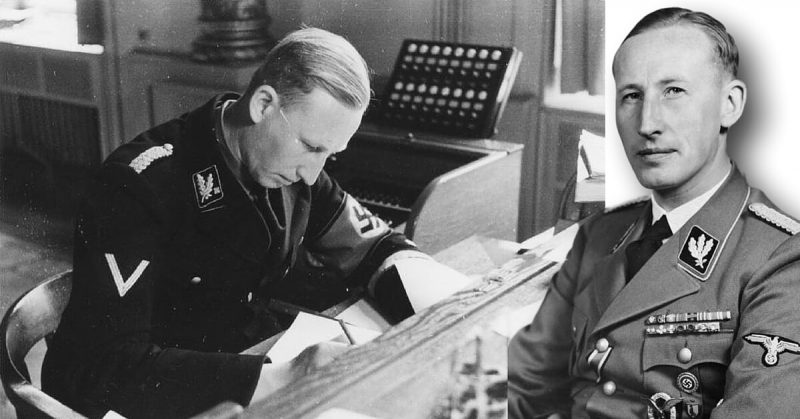When he was a young child, nobody would have guessed that Reinhard Heydrich would become one of the most monstrous men in history.
However, Heydrich went on to become the architect of some of the worst atrocities of all time, earning the nickname “The Hangman” in the process. Even Hitler himself referred to Reinhard as “the man with the iron heart.”
Drift Towards Fascism
As a child, Heydrich was raised in a middle class musical family, became a successful student and athlete, and developed expert-level abilities as a violin player. The only sign of trouble was that he was a loner, perhaps as a result of his mother’s strict discipline and the bullying he received from other children.
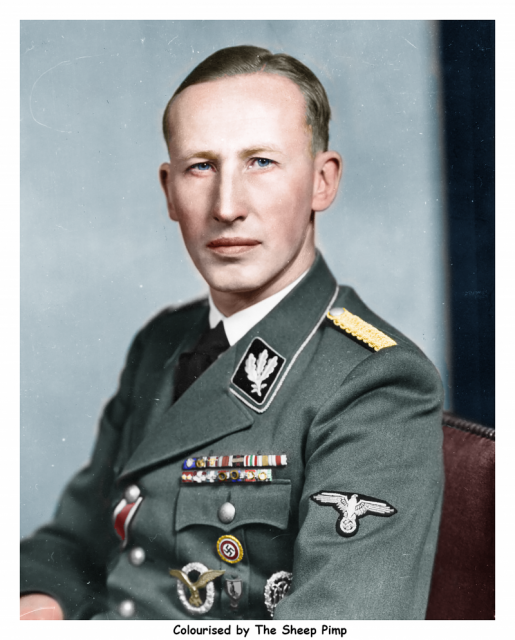
In addition to being a devout Catholic in a very Protestant town, he was bullied over false rumors of Jewish ancestry.
Although the young Reinhard was only in his mid-teens when the Great War ended, he witnessed the chaos and humiliation of Germany’s surrender. Along with many others in his family, he fell into anti-Semitic beliefs to explain Germany’s loss.
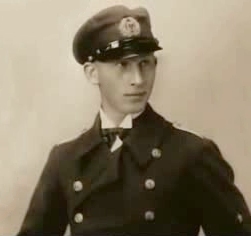
Soon, in reaction to a post-war Communist revolution in Germany, Heydrich decided to join the far-right Freikorps. Now surrounded by nationalists and anti-Semites, he soon joined the Deutschvölkischer Schutz- und Trutzbund, an influential anti-Semitic organization that popularized the use of the swastika and inspired many later Nazi leaders.
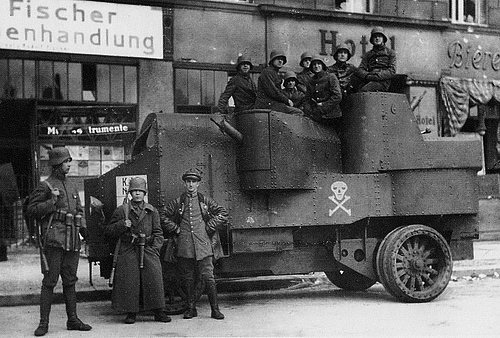
Heydrich seemed to be doing well for himself when he enlisted in the German Navy as an officer cadet at age 18. After being promoted to Lieutenant in six years, he worked in naval intelligence until 1931.
At that point he was kicked out of the Navy for having an affair while engaged to a superior’s daughter. A military court ruled that this was conduct unbecoming of an officer. He ended up marrying that other woman, who was a supporter of the newly influential Nazi party.
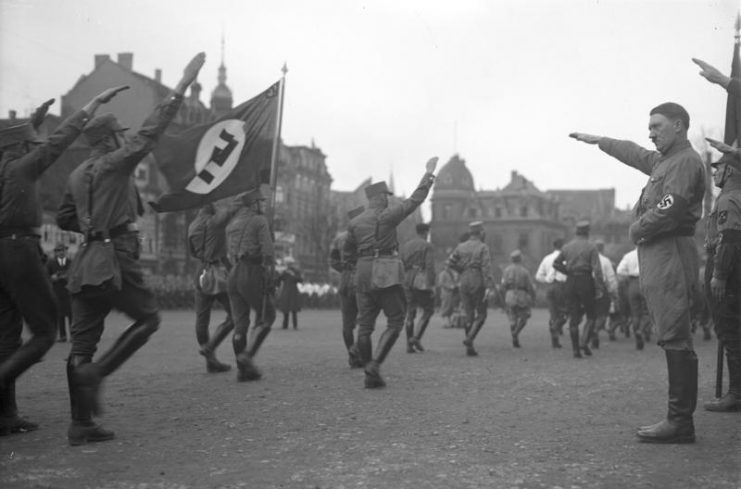
As a Nazi
Now unemployed in a horrible economy, Reinhard was desperate. However, he still held on to one group that he knew accepted him: anti-Semitic nationalists. As a newly minted member of the Nazi Party, he soon stumbled across a great opportunity. A family friend saw potential in him, and decided to introduce him to one of the most powerful Nazi leaders, Heinrich Himmler.
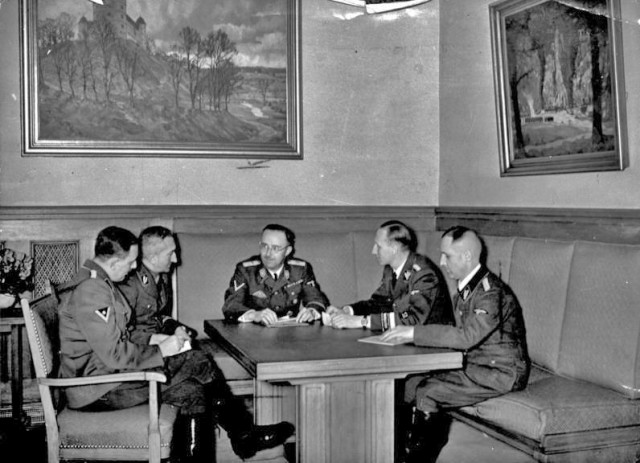
Himmler, the leader of the SS, was impressed with Heydrich after their meeting and felt that Heydrich’s experience in military intelligence would be perfect for what the Nazis were planning. Although they had not yet taken power, the Nazis were already engaging in violence to suppress the votes of Social Democrats and Communists.
The Nazis would soon expand their spying, violence, and espionage to unprecedented levels. It was to this end that Heydrich was placed in a key position to create the intelligence and surveillance arm of the SS, the Sicherheitsdienst (SD).
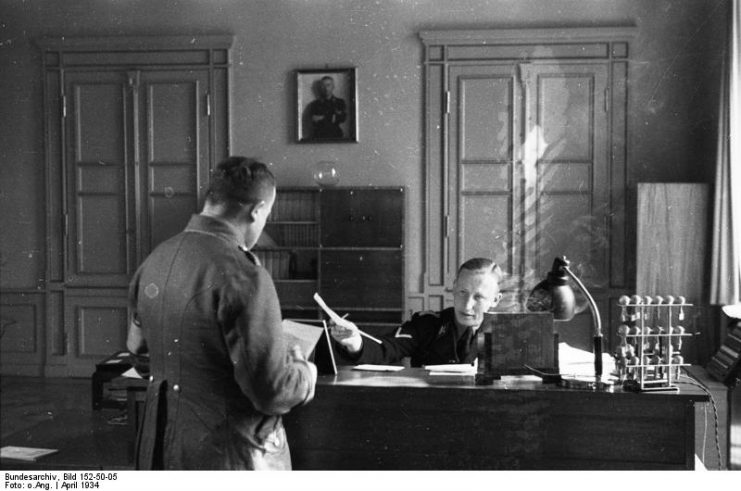
One of the first things Heydrich did was create a system of index cards and files about all of the Nazi Party’s enemies. This system would play a crucial role in the Nazis’ quick consolidation of power, as those files were used to identify victims for raids, beatings, imprisonment, and murder.
In 1934, shortly after Hitler rose to power, Heydrich became the head of the SS in Berlin. That same year he played a key role in further solidifying Nazi power: ensuring they were firmly in control of police forces all across Germany as a part of their ploy to hold on to power.
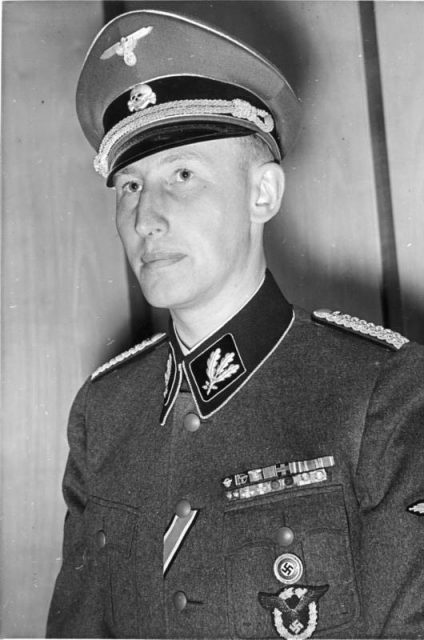
When Himmler rose to become the formal leader of all police in Germany, Heydrich was promoted to lead the SD and the Gestapo. Despite his quick rise to power, Reinhard was relatively trusted in the party, and had even befriended Hitler himself, entering the inner circle of Nazi leadership.
Hitler trusted Reinhard so much that he selected Reinhard and Himmler to secretly create more files on certain enemies. But this time, it was high ranking Nazi leaders who were added. Hitler was preparing to purge the SA and it’s leader, Ernst Röhm.
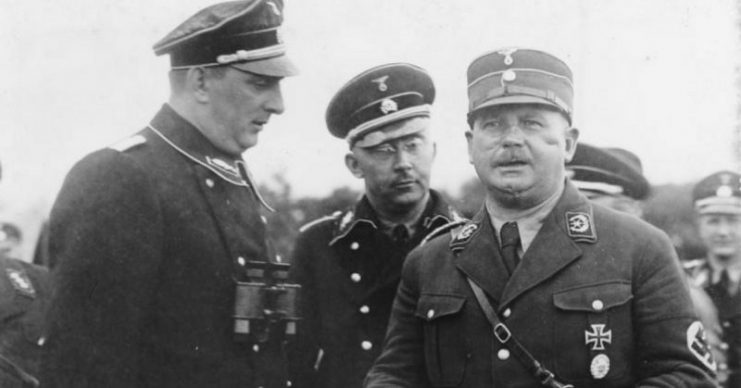
The German military had long been concerned about the growing power of the SA – who were essentially an army loyal to the Nazi Party, not Germany – and Hitler worried that some SA leaders might challenge him for power.
Heydrich, along with Hitler, Himmler, and several other high ranking Nazis, designed the purge that would become known as the “Night of the Long Knives.” Heydrich himself made the final list of those who would be killed.
After Hitler’s targets were eliminated, Reinhard would put this experience to use once more.
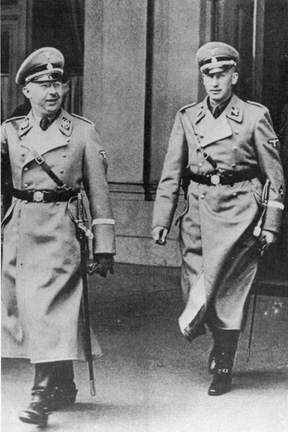
Persecution of Jews
When the Kristallnacht attacks were launched at Jews all across Germany and newly occupied Austria, Heydrich quickly endorsed the attacks. He sent out an order stating that “Whatever actions occurred should not endanger German lives or property; synagogues could be burned only if there was no danger to the surrounding buildings. Healthy, nonelderly adult Jewish males were to be seized first, and concentration camps notified.”
In the wake of Kristallnacht 30,000 Jews were captured by the Nazi police. This was the beginning of the mass imprisonment of Jews in Nazi concentration camps.
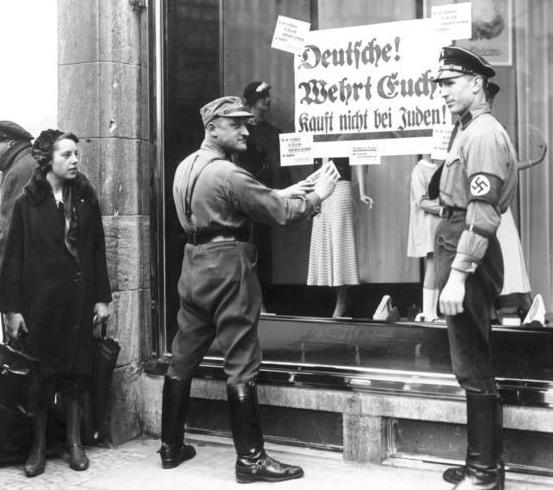
Shortly before Germany annexed Austria, Heydrich was entrusted with creating a “Final Solution” for how Germany was going to deal with Jewish people. Heydrich’s first step was to create special operations groups that would follow closely behind the German army.
These groups (Einsatzgruppen) would set up intelligence networks in occupied lands and look for any “enemies of the state” living in those areas, which essentially meant that they would hunt down Jews.
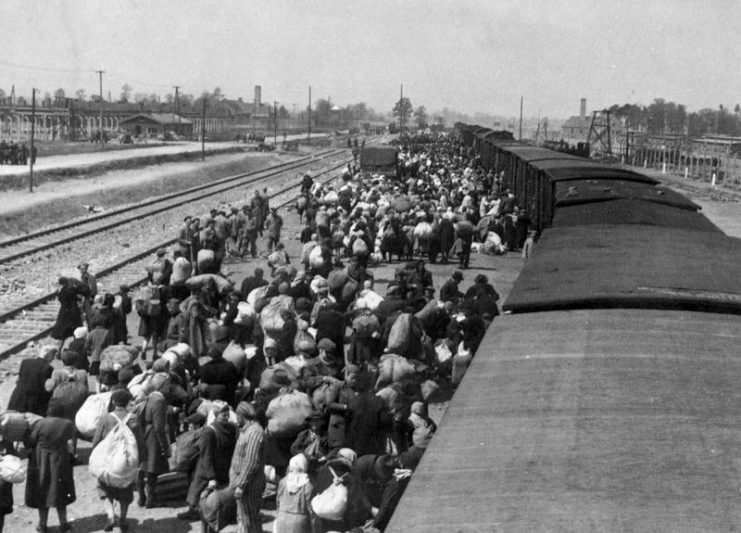
The United States Holocaust Memorial Museum explains their methods of operation after the Nazis invaded the Soviet Union: “In actual practice—and perhaps in accordance with a pre-invasion verbal understanding—the Einsatzgruppen annihilated most Jews of arms-bearing age from the very first days of the invasion.”
Generally this was done by shooting innocent civilians as soon as they were captured, but others were sent to newly established concentration camps.
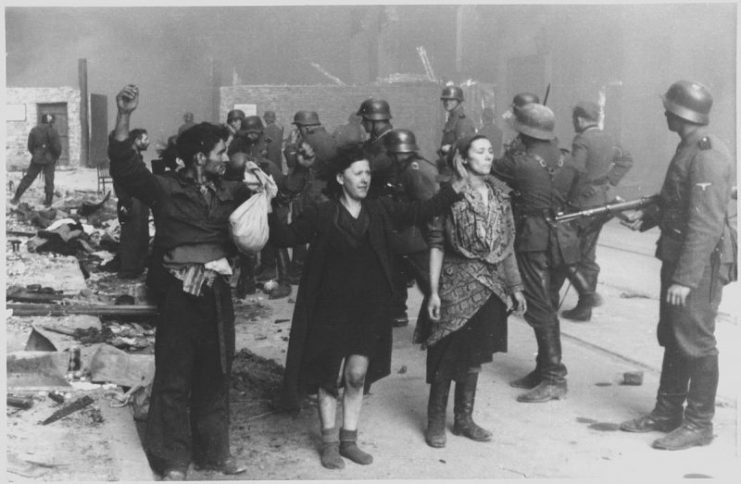
Reinhard Heydrich was a true believer in the Nazi agenda – to the point that he became one of the key architects of the Holocaust. In January 1942, Reinhard Heydrich called a meeting of important government officials in the Berlin suburb of Wannsee. It was there that he revealed the plans for his “Final Solution,” approved by Hitler himself.
All government officials present and their agencies were to cooperate by sending the Jewish population of Europe to various concentration camps. There the SS would force them into work gangs. Those who survived or were unable to work would be murdered, often in gas chambers. Heydrich had officially created industrialized genocide.
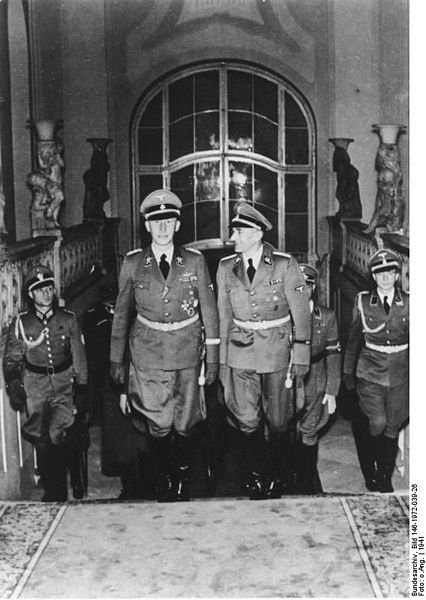
“Protector” of Czechoslovakia and Demise
As a reward for his loyalty to Hitler and dedication to the Nazi cause, Heydrich was made the Reichsprotektor of Bohemia and Moravia (Czechoslovakia) in late 1941. Unsurprisingly, his leadership was a reign of terror.
He set up a Jewish ghetto almost immediately in Theresienstadt, and soon resorted to extreme measures to counter the anti-Nazi resistance movement. Over the course of two months, over 300 supposed resistance fighters were sentenced to death by special courts, and over 1,200 more were turned over to the Gestapo. Over 30,000 Jews were deported during his short time as “Protector.”
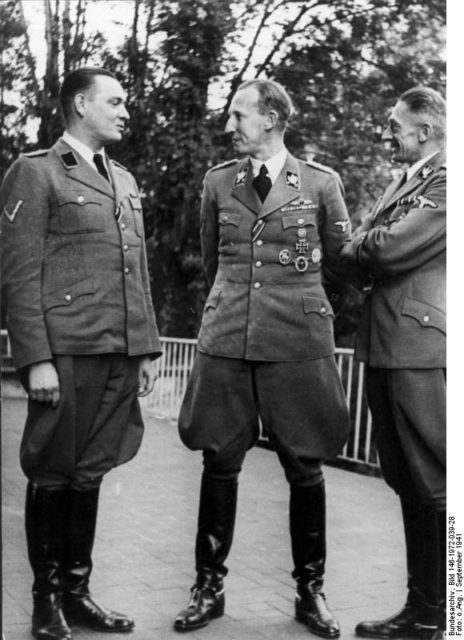
After taking these repressive measures and providing monetary incentives for Czechoslovakian farmers to produce goods for the Reich, rates of attacks and sabotage against Nazi occupiers decreased by nearly 75%. Reinhard was so confident that he refused to travel with a security detail or in an armored car. Instead, he flaunted his confidence by being driven around in an open-top Mercedes.
As he became more powerful and infamous, he also became more of a target for Allied intelligence and special operations forces. The British SAS trained two agents, Jozef Gabčík, a native Slovak, and Jan Kubiš, a Czech, to parachute into occupied Czechoslovakia and kill Heydrich. After several aborted attempts, they decided to ambush him during his commute on May 27, 1942.
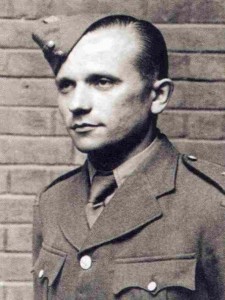
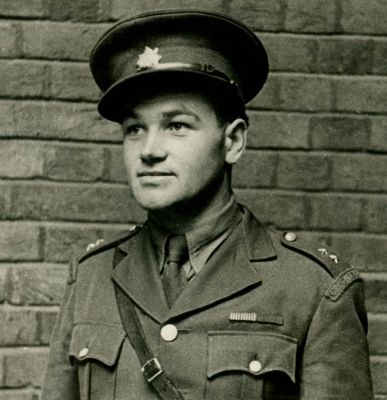
The agents waited by a curb on Heydrich’s usual route. As Heydrich’s car slowed to make the turn, Gabčík pulled out a machine gun, but it jammed. Amused and overconfident, Heydrich told his driver to stop, and then stood up to aim his Luger at Gabčík.
However, Kubiš had brought a modified anti-tank grenade. As the car stopped, Kubiš pulled out the grenade and threw it. Before Heydrich had a chance to fire his gun, the grenade detonated, injuring both Heydrich and Gabčík.
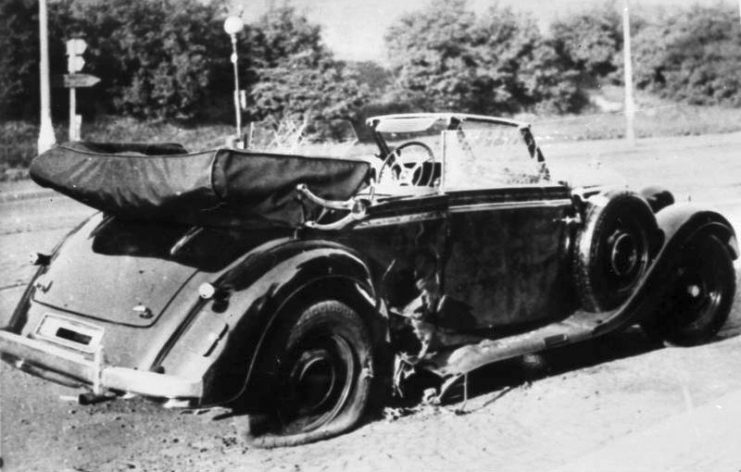
Still, Heydrich was not dead, and as he stumbled out of the car both assassins began firing their sidearms. Unfortunately, they were so rattled by the explosion that neither of them hit Heydrich. Heydrich attempted to chase Kubiš, but collapsed from his wounds. He ordered his driver to chase down Gabčík, but Gabčík wounded the driver during his escape.
Heydrich was taken to a hospital where he received the best possible care. However, after suffering for a week, he died a slow, painful death attributed to sepsis and wound infection.
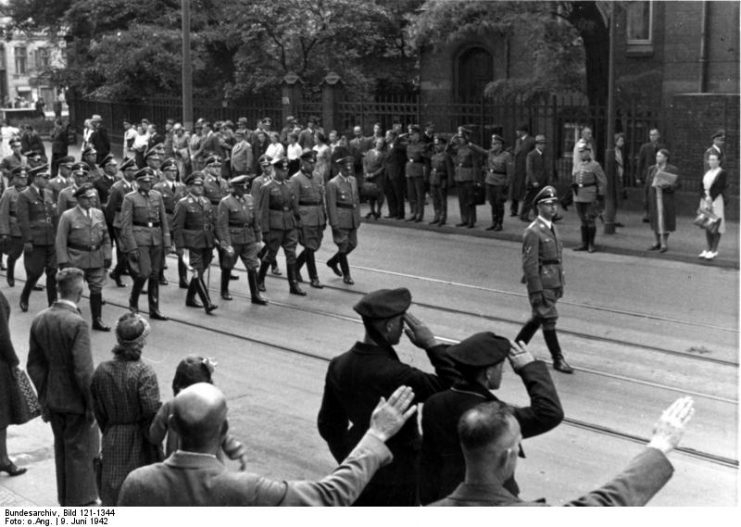
Was it Worth it?
The Nazis’ revenge was harsh and indiscriminate. Over 13,000 were arrested, and as many as 5,000 killed. Two towns, Lidice and Ležáky, were leveled by the Nazis, and nearly all of their occupants killed.
Both Kubiš and Gabčík were killed after another member of their team, Karel Čurda, betrayed them for reward money the Nazis offered. Čurda was found guilty of treason after the war, and was executed. The SS commander who ordered the Lidice massacre was also executed after the war.
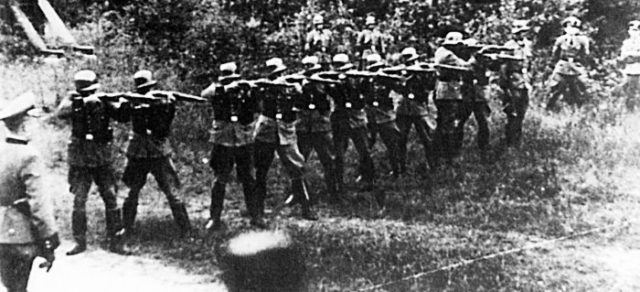
The decision to carry out the assassination soon became controversial. Before the assassination, some locals had tried to talk down the freedom fighters, arguing that the reprisal would be so severe that killing Heydrich would not be worth it.
However, it is impossible to know what atrocities Heydrich might have committed had he lived longer. He was a member of the Nazi Party for only 10 years, and yet he became a key member of Hitler’s inner circle and orchestrated many of the worst atrocities in human history.
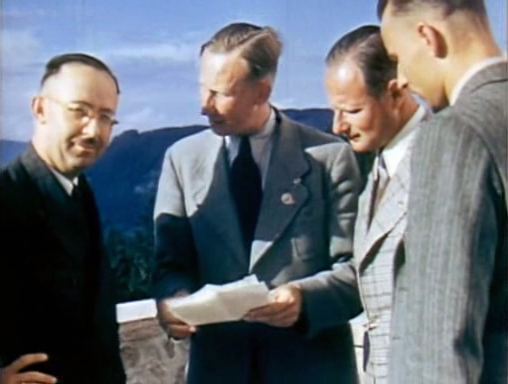
He had already begun to identify which Czechoslovakians would be fit for “Germanification” and which ones would be eliminated. How many more would he have had killed before the end of the war?
